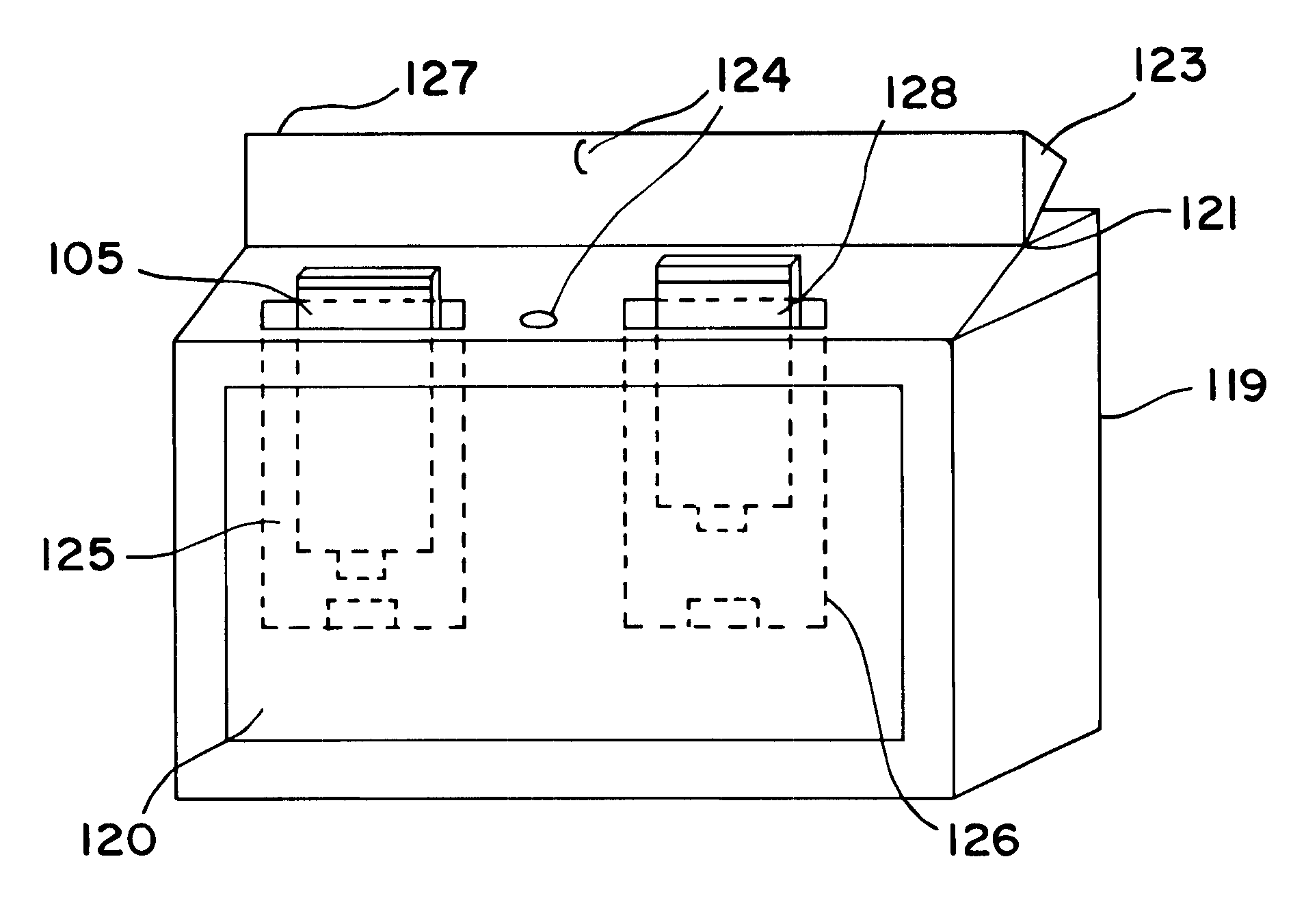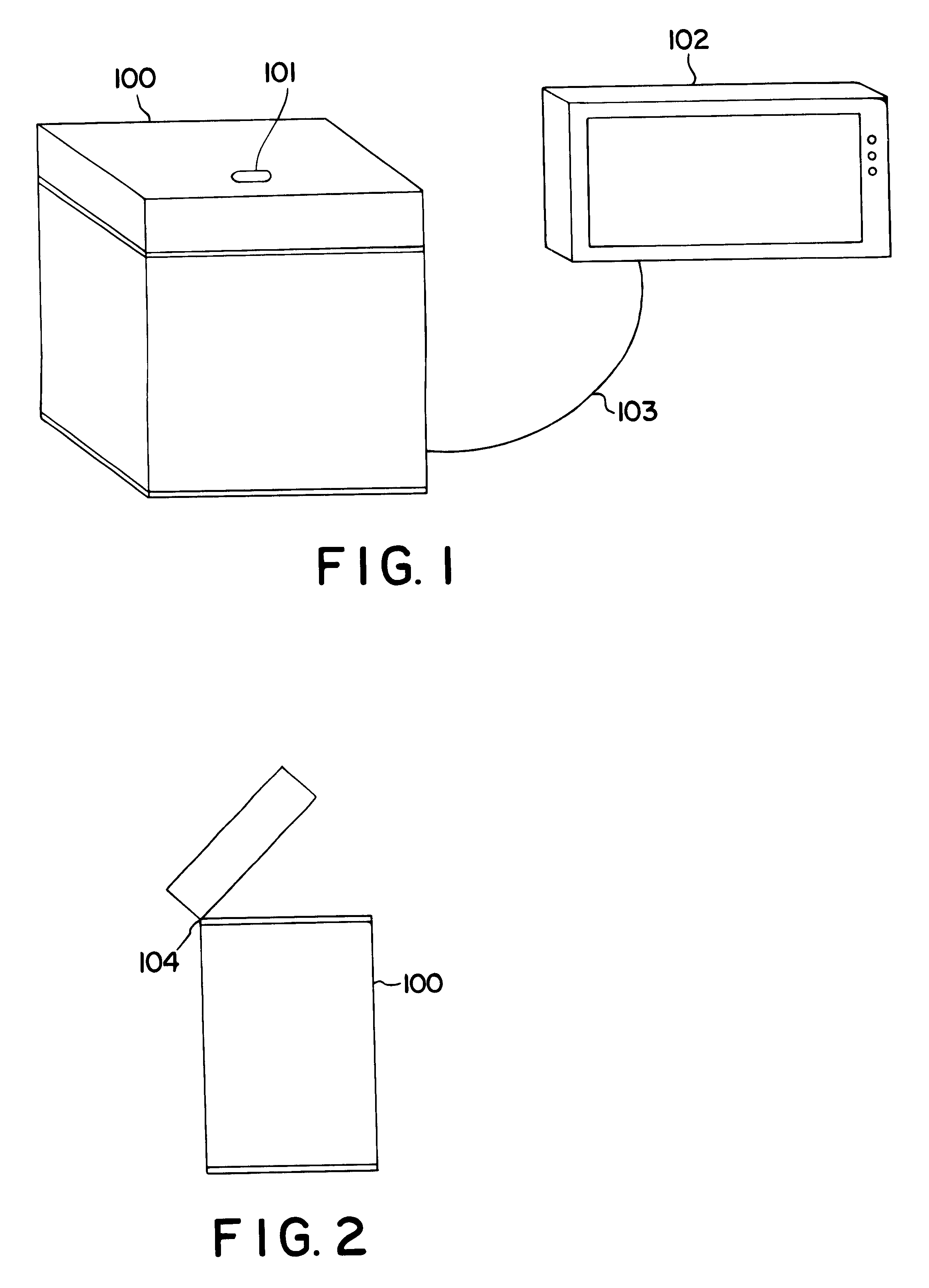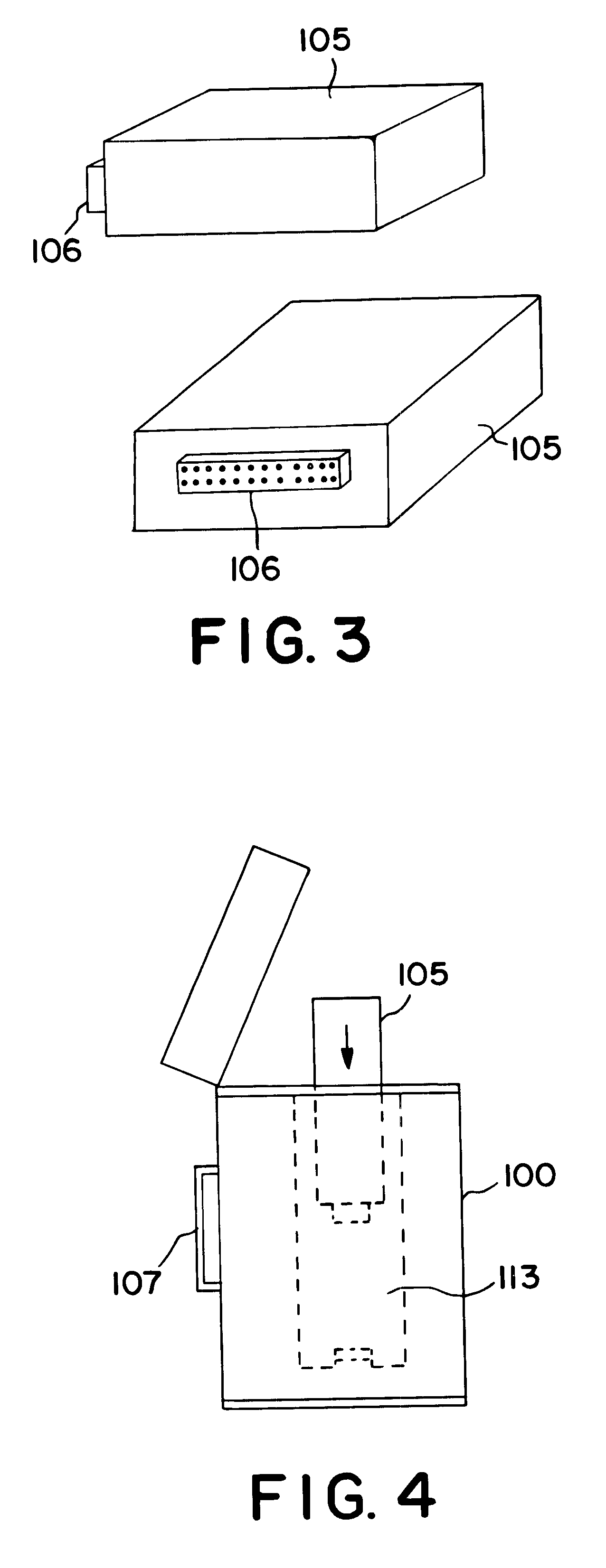Intrinsically safe enclosure and method
a computer and enclosure technology, applied in the field of enclosures for computers and computers, can solve the problems of inconvenient carrying around of laptops, and the inability to use laptops, and achieve the effect of increasing the cost of devices and improving the productivity of mobile technical workers
- Summary
- Abstract
- Description
- Claims
- Application Information
AI Technical Summary
Benefits of technology
Problems solved by technology
Method used
Image
Examples
Embodiment Construction
Discussion of the invention will now be made with specific reference to the drawing figures. FIG. 1 illustrates an exemplary embodiment of the present invention. The present invention includes an enclosure 100 with a latching lid which is released by latch release 101. The enclosure casing 100 is made of a light weight electrically insulating material such as plastic. The case 100 communicates with an external display 102 via hardwire connection 103. Alternatively, the connection between the case 100 and the display 102 is a wireless connection. The connection between the case 100 and the display 102 may be a permanent connection thus eliminating a contact point for a potential spark to be generated or alternatively the connection may be provided by an external safe connector. Connectors of this type are used in underwater communication line connections and are water and air tight. Utilized in the present invention such connectors would maintain the intrinsically safe properties of ...
PUM
 Login to View More
Login to View More Abstract
Description
Claims
Application Information
 Login to View More
Login to View More - R&D
- Intellectual Property
- Life Sciences
- Materials
- Tech Scout
- Unparalleled Data Quality
- Higher Quality Content
- 60% Fewer Hallucinations
Browse by: Latest US Patents, China's latest patents, Technical Efficacy Thesaurus, Application Domain, Technology Topic, Popular Technical Reports.
© 2025 PatSnap. All rights reserved.Legal|Privacy policy|Modern Slavery Act Transparency Statement|Sitemap|About US| Contact US: help@patsnap.com



